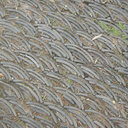Co-existence of COPD and bronchiectasis: a risk factor for a high ratio of main pulmonary artery to aorta diameter (PA:A) from computed tomography in COPD patients.
कीवर्ड
सार
Pulmonary vascular disease, especially pulmonary hypertension, is an important complication of COPD. Bronchiectasis is considered not only a comorbidity of COPD, but also a risk factor for vascular diseases. The main pulmonary artery to aorta diameter ratio (PA:A ratio) has been found to be a reliable indicator of pulmonary vascular disease. It is hypothesized that the co-existence of COPD and bronchiectasis may be associated with relative pulmonary artery enlargement (PA:A ratio >1).
This retrospective study enrolled COPD patients from 2012 through 2016. Demographic and clinical data were collected. Bhalla score was used to determine the severity of bronchiectasis. Patient characteristics were analyzed in two ways: the high (PA:A >1) and low (PA:A ≤1) ratio groups; and COPD with and without bronchiectasis groups. Logistic regression analysis was used to assess risk factors for high PA:A ratios.
In this study, 480 COPD patients were included, of whom 168 had radiographic bronchiectasis. Patients with pulmonary artery enlargement presented with poorer nutrition (albumin, 35.6±5.1 vs 38.3±4.9, P<0.001), lower oxygen partial pressure (74.4±34.5 vs 81.3±25.4, P<0.001), more severe airflow obstruction (FEV1.0, 0.9±0.5 vs 1.1±0.6, P=0.004), and a higher frequency of bronchiectasis (60% vs 28.8%, P<0.001) than patients in the low ratio group. Patients with both COPD and bronchiectasis had higher levels of systemic inflammation (erythrocyte sedimentation rate, P<0.001 and fibrinogen, P=0.006) and PA:A ratios (P<0.001). A higher PA:A ratio was significantly closely correlated with a higher Bhalla score (r=0.412, P<0.001). Patients with both COPD and bronchiectasis with high ratios presented higher levels of NT-proBNP (P<0.001) and systolic pulmonary artery pressure (P<0.001). Multiple logistic analyses have indicated that bronchiectasis is an independent risk factor for high PA:A ratios in COPD patients (OR =3.707; 95% CI =1.888-7.278; P<0.001).
Bronchiectasis in COPD has been demonstrated to be independently associated with relative pulmonary artery enlargement.



